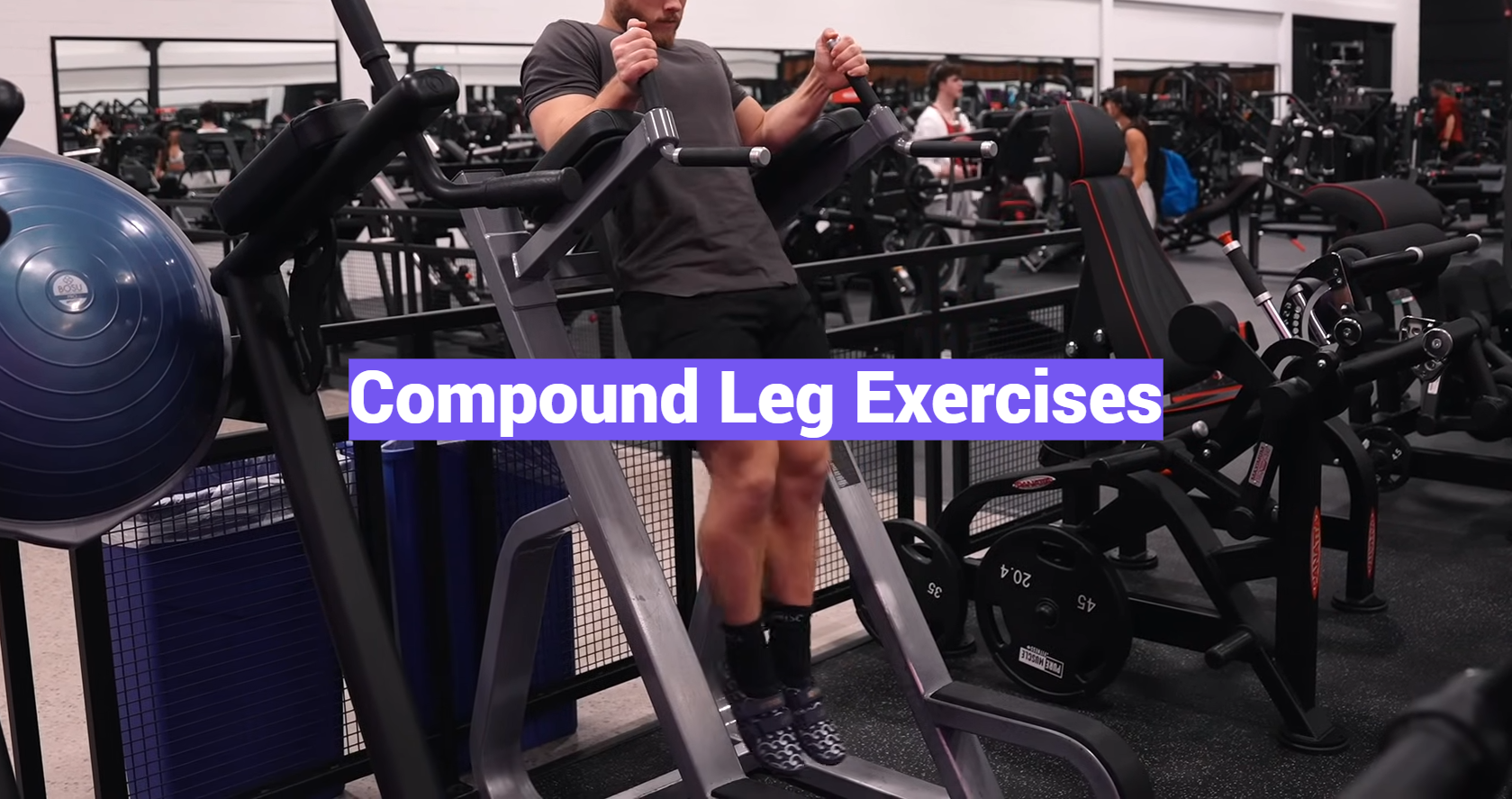Compound leg exercises are fundamental to any fitness routine, targeting multiple muscle groups simultaneously for efficient and effective workouts. These exercises not only strengthen and tone the lower body, but they also enhance overall body stability, improve balance, and promote functional fitness. Whether you’re an experienced athlete or a fitness novice, incorporating compound leg exercises into your workout regimen can significantly benefit your overall physical health.
History of Compound Leg Exercises
Compound leg exercises have a long history dating back to ancient times. In ancient Greece, compound leg exercises were an integral part of athletes’ training routines and were used as part of their strength and conditioning programs. These exercises were also adopted by the Romans who incorporated them into their military training, believing that strong legs were essential for effective combat.
With time, these exercises evolved and were refined, with new variations and movements being introduced. In the 19th and 20th centuries, weight training became increasingly popular, leading to the development of more advanced compound leg exercises that are commonly used today.
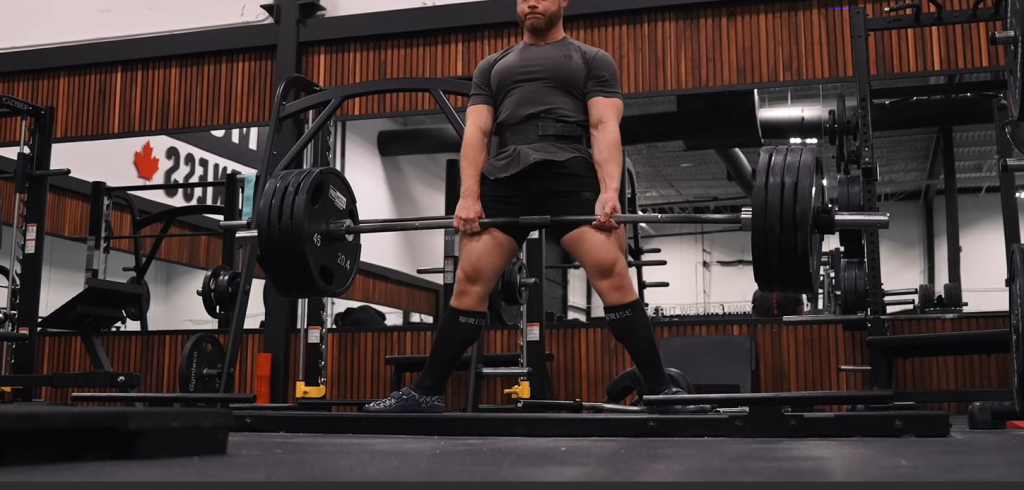
Benefits of Compound Leg Exercises
One of the main benefits of compound leg exercises is their ability to work multiple muscle groups at once. These types of exercises target not only the legs but also engage other muscles such as the core, back, and arms. This makes them an efficient use of time in a workout routine.
Additionally, compound leg exercises can help improve overall strength and power, which is beneficial for both athletes and non-athletes alike. They also aid in improving balance and coordination while promoting better posture and stability. [1]
Types of Compound Leg Exercises
Compound leg exercises are multi-joint movements that involve multiple muscles and joints in the lower body. They are considered to be one of the most efficient ways to target and strengthen your legs, as they engage more muscles compared to isolation exercises.
There are various types of compound leg exercises that can be incorporated into your workout routine. In this section, we will discuss five popular compound leg exercises and their benefits.
1. Squats
Squats are a fundamental compound leg exercise that targets the quadriceps, hamstrings, glutes, and calves. This exercise involves bending at the hips and knees while keeping your back straight and lowering your body towards the ground. Squats can be performed with or without weights, making them suitable for all fitness levels.
Benefits:
- Strengthens and tones the entire leg muscles
- Improves balance and stability
- Enhances functional movement patterns
2. Deadlifts
Deadlifts are a compound exercise that focuses on the hamstrings, glutes, and lower back muscles. This exercise involves lifting a barbell or dumbbells from the ground while keeping your back straight and using your leg muscles to propel the weight upwards.
Benefits:
- Builds strength in the posterior chain of muscles
- Improves hip mobility and stability
- Increases overall power and explosiveness
3. Lunges
Lunges are a unilateral compound exercise that targets one leg at a time, making them great for correcting any muscle imbalances. This exercise involves stepping forward or backward with one leg, bending both knees, and lowering your body towards the ground. [2]
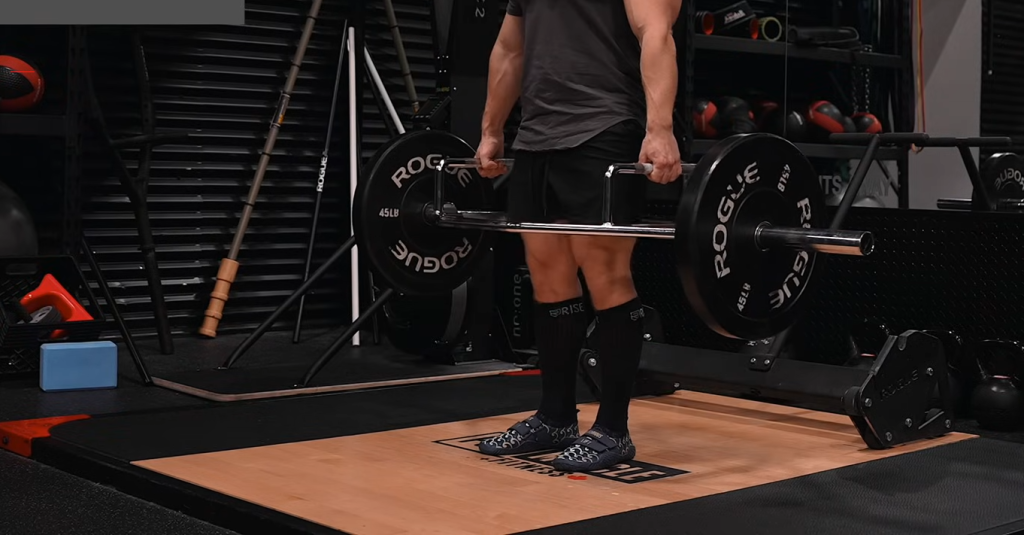
Benefits:
- Increases lower body strength and stability
- Improves balance and coordination
- Helps to prevent injuries by addressing muscle imbalances
4. Step-ups
Step-ups are a compound exercise that targets the quadriceps, hamstrings, glutes, and calves. This exercise involves stepping up onto a platform or bench using one leg at a time, then stepping back down to the starting position.
Benefits:
- Builds strength in the lower body muscles
- Improves stability and balance
- Can be modified to target specific muscles by adjusting the height of the platform
5. Leg Press
The leg press is a compound exercise that targets the quadriceps, hamstrings, and glutes while also engaging the calf muscles. This exercise involves pushing a weighted platform away from your body using your legs.
Benefits:
- Provides a safe alternative to squats for those with back or knee issues
- Can target specific leg muscles by changing foot placement on the platform
- Can be easily modified for different fitness levels by adjusting the weight load
Incorporating compound leg exercises into your workout routine can lead to stronger and more functional legs. Remember to always use proper form and technique, and gradually increase weight and intensity as you progress.
Proper Form and Technique
Proper form and technique are crucial when performing compound leg exercises. It not only ensures that you are targeting the right muscles, but it also helps to prevent injuries. [3]
Here are some general tips for maintaining proper form during compound leg exercises:
- Keep your back straight and core engaged throughout the movement
- Maintain a neutral spine and avoid rounding or arching your back
- Keep your knees in line with your toes and avoid letting them collapse inward
- Push through your heels and engage your glutes during the exercise
- Use a full range of motion to fully engage all muscles involved
Remember to always listen to your body and make modifications as needed. If an exercise causes discomfort or pain, stop immediately and consult a healthcare professional.
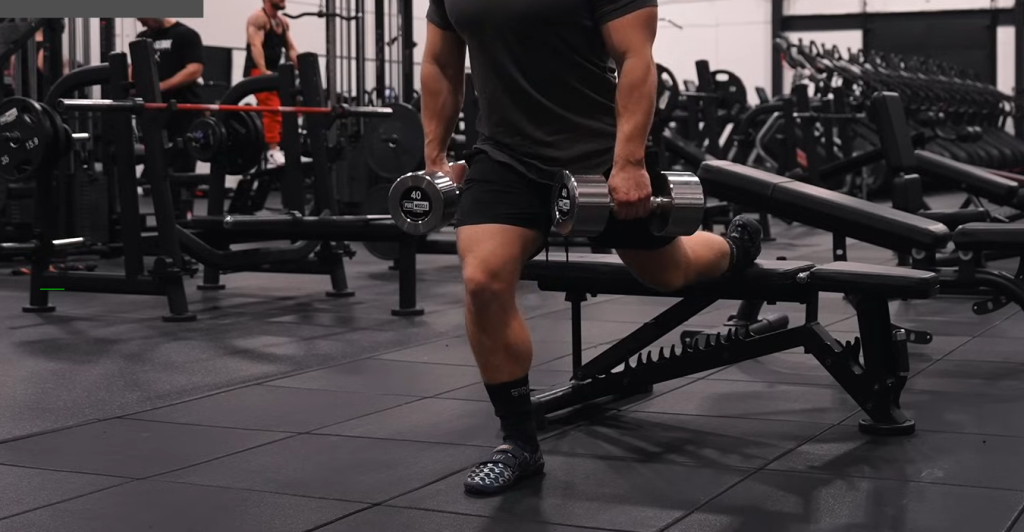
Common Mistakes to Avoid
When performing compound leg exercises, it is important to avoid these common mistakes that can compromise your form and reduce the effectiveness of the exercise:
- Not using a full range of motion
- Rounding or arching your back
- Letting your knees collapse inward
- Using too much weight and sacrificing form
By avoiding these mistakes and focusing on proper form, you can make the most out of your compound leg exercises and achieve optimal results.
Precautions and Safety Measures
While compound leg exercises have numerous benefits, it is important to take necessary precautions and safety measures to prevent injuries.
- Always warm up properly before starting your workout
- Use appropriate weight for your fitness level and gradually increase as you progress
- Listen to your body and take breaks when needed
- Do not push through pain or discomfort
- Perform exercises on a stable surface to avoid falls or slips
- Consult a healthcare professional if you have any pre-existing conditions or are unsure about an exercise
Incorporating compound leg exercises into your workout routine can greatly improve leg strength, stability, and overall fitness.
Incorporating Compound Leg Exercises into Your Workout Routine
Now that you are familiar with various compound leg exercises and their benefits, it’s time to incorporate them into your workout routine.
Here are a few tips for adding compound leg exercises to your workouts:
- Start with one or two exercises per session and gradually increase as you progress
- Mix up the type of compound leg exercises you do to target different muscles
- Incorporate compound leg exercises into your full-body or lower body workout routine
- Combine compound exercises with isolation exercises for a well-rounded leg workout
By incorporating compound leg exercises into your regular workouts, you can achieve stronger and more functional legs.
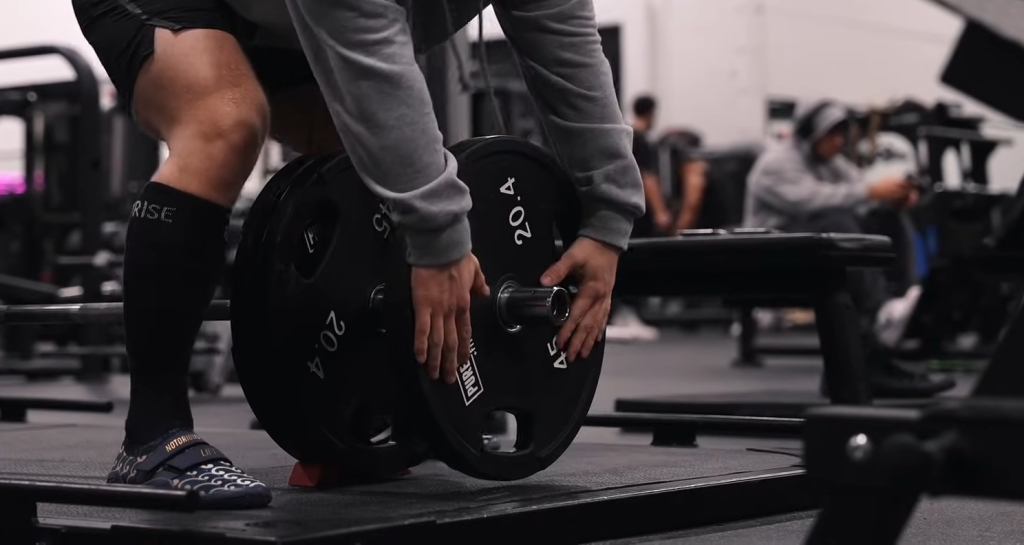
Top 15 Compound Leg Exercises and How to Perform Them
Compound leg exercises are an essential element of any workout routine, regardless of your fitness level or training goals. These exercises involve multiple muscle groups and joints working together to perform a movement, resulting in improved strength, stability and balance.
In this article, we will take you through a list of the top 15 compound leg exercises that you can incorporate into your workout routine for maximum results.
1. Squats
Squats are one of the most effective compound leg exercises that work your quads, glutes, hamstrings and calves simultaneously. To perform a squat, stand with your feet shoulder-width apart, keep your back straight and lower yourself by bending at the knees until they reach a 90-degree angle or slightly lower. Then, push through your heels to return to the starting position.
2. Lunges
Lunges are a great exercise for targeting your quads, glutes and hamstrings while also improving balance and flexibility. Start by standing with your feet hip-width apart and take a large step forward with one leg, keeping your back straight. Lower yourself until both knees reach a 90-degree angle, then push through your front heel to return to the starting position.
3. Deadlifts
Deadlifts primarily target your glutes and hamstrings while also engaging your lower back and core muscles. Stand with your feet hip-width apart, hold a barbell or dumbbells in front of you, keeping them close to your legs. Bend at the hips, keeping your back straight, and lower the weight towards the ground. Push through your heels to return to the starting position. [4]
4. Step-ups
Step-ups are a great compound exercise for working your quads, glutes and hamstrings while also improving balance and coordination. Stand in front of a bench or step with dumbbells in hand. Step onto the bench with one foot and push through your heel to lift your body up. Step back down and repeat on the other side.
5. Leg Press
Leg press machines are an excellent option for targeting your quads, glutes and hamstrings while also minimizing stress on your lower back. Adjust the seat and foot placement according to your comfort level, then push the weight away from your body until your legs are fully extended. Slowly lower the weight back towards you.
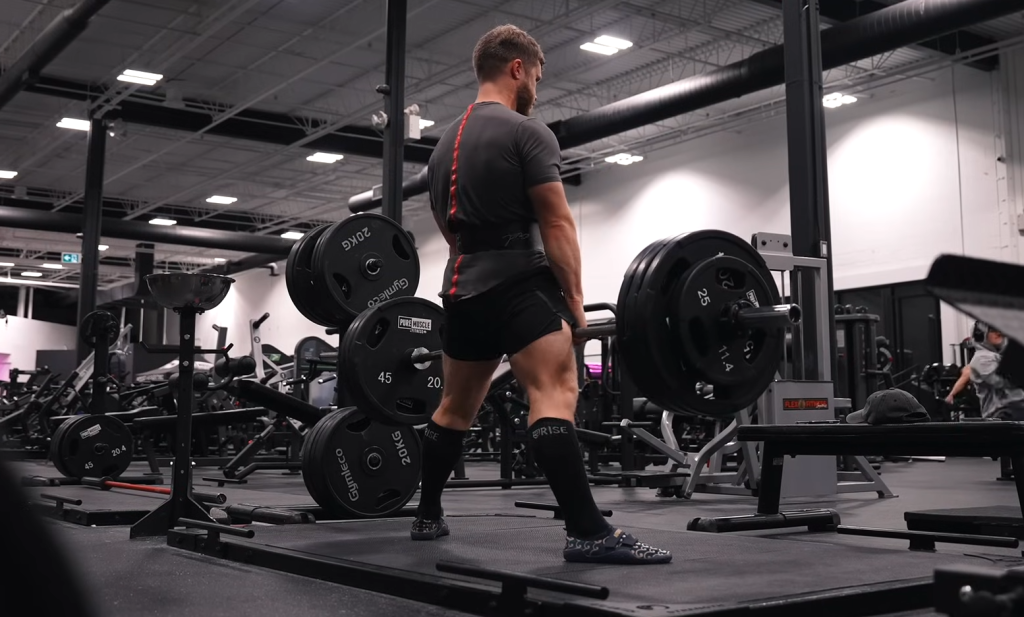
6. Box Jumps
Box jumps are an explosive compound exercise that targets your quads, glutes and calves while also improving power and agility. Stand in front of a sturdy box or platform, bend at the knees and hips, then jump onto the platform with both feet. Step down carefully and repeat.
7. Bulgarian Split Squats
Bulgarian split squats are a challenging compound exercise that targets your quads, glutes and hamstrings while also improving balance and stability. Stand in front of a bench or step with one foot elevated behind you, rest your other foot on the ground. Lower yourself until your back knee almost touches the ground, then push through your front heel to return to the starting position.
8. Calf Raises
Calf raises are a simple yet effective compound exercise for targeting your calves while also improving ankle stability. Stand with your feet hip-width apart and rise onto the balls of your feet, hold for a few seconds and slowly lower yourself back down.
9. Glute Bridges
Glute bridges primarily target your glutes and hamstrings while also engaging your core muscles for stability. Lie on your back with your knees bent, feet shoulder-width apart and push through your heels to lift your hips off the ground until they are aligned with your shoulders. Hold for a few seconds, then lower yourself back down. [5]
10. Sumo Squats
Sumo squats are a variation of the traditional squat that targets your inner thighs, quads and glutes. Stand with your feet wider than shoulder-width apart, toes slightly pointed outwards. Lower yourself by bending at the knees until they reach a 90-degree angle, then push through your heels to return to the starting position.
11. Romanian Deadlifts
Romanian deadlifts are a variation of the traditional deadlift that targets your hamstrings, glutes and lower back. Stand with your feet hip-width apart, hold a barbell or dumbbells in front of you with your palms facing down. Bend at the hips while keeping your knees slightly bent until you feel a stretch in your hamstrings. Push through your heels to return to the starting position.
12. Leg Curls
Leg curls primarily target your hamstrings while also engaging your glutes and calves. Adjust the leg curl machine according to your comfort level, then lie down on your stomach with your ankles resting under the padded lever. Curl your legs towards you until they form a 90-degree angle, then lower them back down.
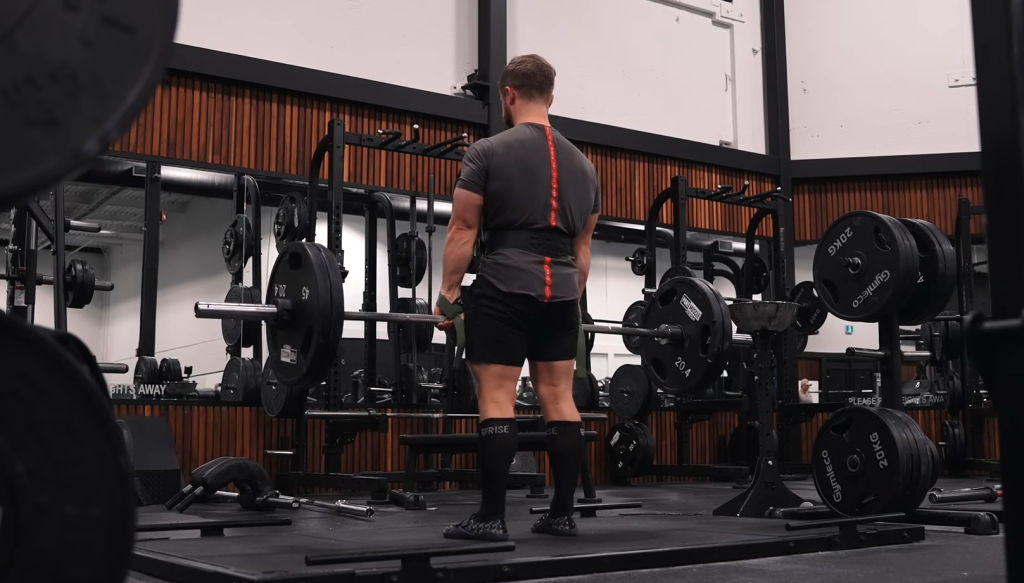
13. Farmer’s Walk
Farmer’s walks are an excellent compound exercise for targeting your legs, core and grip strength. Hold heavy dumbbells or kettlebells in each hand, stand tall and walk forward at a controlled pace while keeping your shoulders back and down.
14. Clean and Jerk
The clean and jerk is a complex compound exercise that targets your legs, back, shoulders, and arms while also improving power and explosiveness. Begin with a barbell on the ground, grab it with an overhand grip, then lift it to your shoulders using a combination of deadlifts, shrugs, and front squats. Finally, press the weight above your head.
15. Kettlebell Swings
Kettlebell swings are a dynamic compound exercise that targets your quads, glutes and hamstrings while also improving cardiovascular endurance. Begin with a kettlebell on the ground in front of you, then swing it up to shoulder height using your hip thrust and arm strength. Lower the weight back towards you and repeat. [6]
By incorporating compound leg exercises into your workout routine, you can efficiently target multiple muscle groups while also improving overall strength and stability. Be sure to choose a variety of exercises and adjust the weights or resistance according to your fitness level for maximum results. Additionally, don’t forget to incorporate proper form and warm-up before beginning any exercise routine to prevent injury.
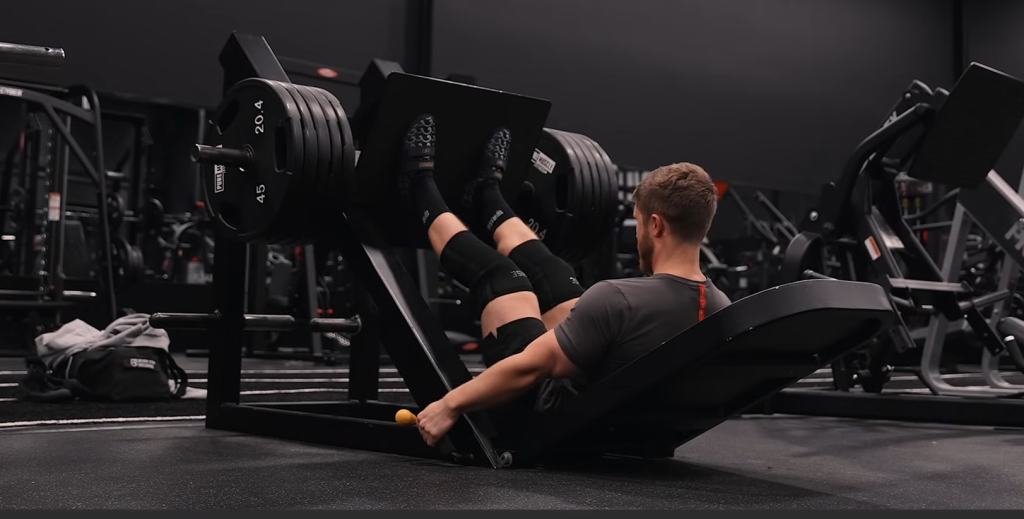
FAQs
What are compound leg exercises?
Compound leg exercises are strength training exercises that involve multiple joints and muscles in the legs. These exercises typically target large muscle groups such as the quadriceps, hamstrings, glutes, and calves. Examples of compound leg exercises include squats, deadlifts, lunges, and step-ups.
Why are compound leg exercises important?
Compound leg exercises are important because they allow you to work multiple muscle groups at the same time, which can save time in your workout and increase overall strength and muscle mass. These exercises also mimic real-life movements, making them more functional for daily activities.
Can compound leg exercises be modified for different fitness levels?
Yes, compound leg exercises can be modified for different fitness levels by adjusting the weight used, range of motion, and type of equipment. For example, beginners can start with bodyweight squats or lunges and gradually increase the weight as they build strength. Additionally, using a resistance band or stability ball can also make these exercises more accessible for those with limited mobility or injuries.
Are compound leg exercises suitable for everyone?
Compound leg exercises can be beneficial for people of all ages and fitness levels, but it is important to consult with a healthcare professional before starting any new exercise routine. They may not be suitable for individuals with certain injuries or medical conditions that could worsen with these types of exercises.
How often should compound leg exercises be included in a workout routine?
The frequency of compound leg exercises depends on individual goals and preferences, but they should typically be included in a workout routine at least 2-3 times per week. It is also important to incorporate rest and recovery days to prevent overtraining and injury.
What are some tips for performing compound leg exercises safely?
To perform compound leg exercises safely, it is important to maintain proper form throughout the entire movement. This includes keeping the chest up, core engaged, and knees in line with the toes. It may also be helpful to start with lighter weights and gradually increase as strength and technique improve. Additionally, always warm up before starting a workout and listen to your body for any signs of discomfort or pain. If necessary, consider hiring a certified personal trainer for guidance on proper form and modifications specific to your needs.
How often should I do these exercises?
As with any exercise, it is important to listen to your body and not overdo it. It is recommended to include compound leg exercises 2-3 times per week in a well-rounded workout routine. However, the frequency can vary depending on your fitness level, goals, and any other workouts you may be doing. If you are just starting out or have recently increased the weight or intensity of your workouts, it is important to give your muscles enough time to recover before doing them again.
What are some examples of compound leg exercises?
Some examples of compound leg exercises include:
- Squats
- Deadlifts
- Lunges
- Step-ups
- Leg presses
- Romanian deadlifts
- Glute bridges
- Calf raises
These are just a few examples, as there are many variations and modifications of these exercises that can target different muscle groups in the legs. It is important to mix up your exercises and incorporate a variety of movements to prevent boredom and continually challenge the muscles.
Can I perform compound leg exercises at home?
Yes, many compound leg exercises can be done at home with minimal equipment. Squats, lunges, and glute bridges can all be performed using just bodyweight or household items such as water bottles or cans for added resistance. However, some exercises may require a set of dumbbells or a resistance band for added challenge. It is also important to have a safe and stable surface to perform these exercises on, such as a yoga mat or carpeted area.
How long does it take to see results from compound leg exercises?
The time it takes to see results from compound leg exercises varies depending on individual factors such as fitness level, diet, and consistency of workouts. With regular practice, most people can expect to see improvements in strength and muscle definition within 4-6 weeks. However, it is important to remember that results may vary and progress takes time, so be patient and stay consistent with your workouts.
What equipment do I need to do compound leg exercises?
Many compound leg exercises can be done with just bodyweight or simple equipment like dumbbells or resistance bands. However, some exercises may require access to a gym or specialized equipment such as a leg press machine. It is important to research and plan your workouts accordingly based on the equipment you have available. Remember, there are always modifications and alternative exercises that can target similar muscle groups if you do not have access to certain equipment.
What is the difference between compound and isolation leg exercises?
Compound leg exercises involve multiple muscle groups and joints working together to perform the movement, while isolation exercises focus on one specific muscle group. For example, a squat is a compound exercise as it works the quads, hamstrings, and glutes, whereas a leg extension machine isolates just the quadriceps. Both types of exercises have their benefits and can be incorporated into a well-rounded leg workout routine. It is important to have a balance of both compound and isolation exercises for optimal results.
How can I incorporate compound leg exercises into my workout routine?
Compound leg exercises can be incorporated in various ways depending on your goals and preferences. Some options include doing a full-leg day where you focus solely on compound leg movements, or incorporating them into a full-body workout routine by pairing them with upper body exercises. It is also important to vary the exercises and rep ranges to continually challenge your muscles and prevent boredom. As always, listen to your body and adjust as needed for rest and recovery days.
How can I avoid injury when performing compound leg exercises?
To avoid injury, it is important to perform compound leg exercises with proper form and technique. This includes starting with lighter weights and gradually increasing as strength improves, maintaining a stable core and neutral spine throughout the movement, and not exceeding your body’s limits. It is also important to warm up properly before starting a workout, listen to your body for any signs of discomfort or pain, and incorporate rest and recovery days into your routine. If necessary, consult a professional for guidance on proper form and modifications specific to your needs.
Are there any benefits to using compound leg exercises?
Yes! Compound leg exercises offer numerous benefits such as improved overall strength, muscle definition, and coordination. They also engage multiple muscle groups and joints, making them more efficient and effective in building functional strength for everyday movements. Additionally, compound leg exercises can help improve balance and stability, which is especially beneficial for older adults. By incorporating these exercises into your workout routine, you can see improvements in overall fitness and performance.
Can compound leg exercises help with weight loss?
While compound leg exercises themselves will not directly lead to weight loss, they can be a helpful component of a well-rounded workout routine for those looking to lose weight. These exercises can help increase muscle mass and improve overall metabolism, which can contribute to burning more calories throughout the day. Additionally, compound leg exercises are often paired with cardiovascular exercise and a healthy diet for optimal results in weight loss. Overall, compound leg exercises can play a role in maintaining a healthy weight and improving overall fitness.
Conclusion
In conclusion, compound leg exercises are a crucial component of any well-rounded workout routine. They offer numerous benefits such as improved strength, muscle definition, balance, and stability. They can be performed at home with minimal equipment or at the gym with specialized equipment. By incorporating a variety of compound leg exercises and properly warming up and listening to your body, you can see improvements in overall fitness and performance. Remember to be patient and consistent, as results may vary for each individual. Finally, consult a professional if needed for guidance on proper form and modifications specific to your needs. So why wait? Start incorporating compound leg exercises into your workout routine today! Stay strong, stay active, and continue striving towards your fitness goals. Happy exercising!
Useful Video: The Ultimate Science-Based Leg Day For Muscle Growth
References:
- https://www.nourishmovelove.com/compound-leg-exercises/
- https://powerliftingtechnique.com/compound-leg-exercises/
- https://builtwithscience.com/fitness-tips/compound-exercises-for-legs/
- https://www.hevyapp.com/compound-isolation-leg-exercises/
- https://www.bodybuildingmealplan.com/compound-leg-exercises/
- https://www.ammfitness.co.uk/information-advice/compound-leg-exercises

